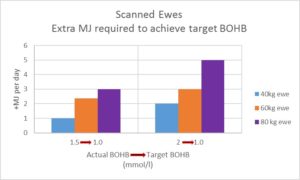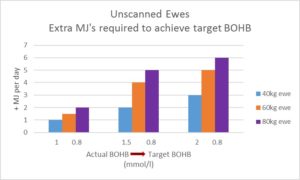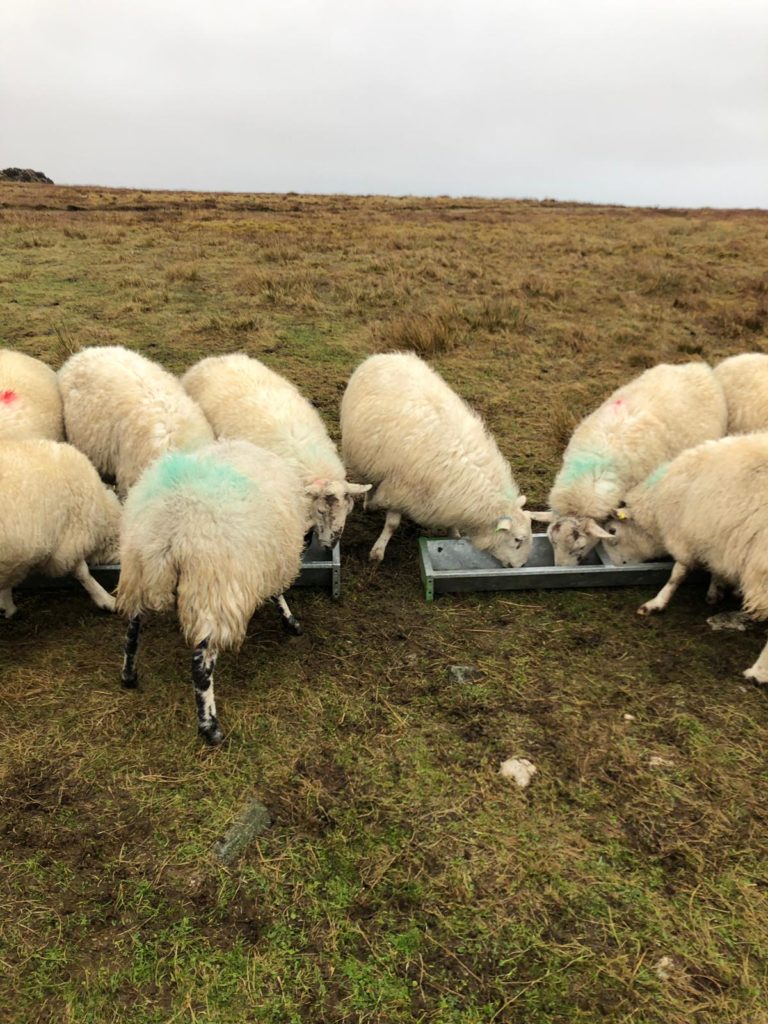Correcting BOHB Levels
1 March 2019A useful check for diet adequacy is a blood sample for the concentration of the ketone β- hydroxyl butyrate (BOHB). This is produced when the reserves of the ewe are mobilised. Monitoring the BOHB level pre-lambing is a good way of checking that the ewe is not in serious energy deficit.
Aim to test 4 weeks before ewes are due to lamb and test all those scanned as twins or all singles depending on which is the major group. The target BOHB concentration is 1 mmol/l if ewes have been scanned and foetal numbers are known. If not, the target is 0.8 mmol/l to allow for the uncertainty. Ewes with levels above 1.5 mmol/l suggest clinical pregnancy toxaemia. Figure 1 shows the extra megajoules of energy required to correct high BOHB levels in scanned ewes at 40, 60 and 80kg. For example an 80kg ewe with a BOHB level of 1.5mmol/l requires an extra 3 MJ of energy in order to achieve the target level of 1mmol/l. Figure 2 shows the same things for unscanned ewes where the target is lowered to 0.8mmol/l. For example an 80kg ewe with a BOHB level of 1.5mmol/l requires an extra 3MJ of energy to achieve a target of 0.8mmol/l.
BOHB levels are useful and can be used in conjunction with condition score. Hill ewes are often thin and additional concentrate can help correct BOHB levels. However, in some cases with lowland ewes which are over fat, over fed concentrates this can also result in pregnancy toxaemia. Due to greedy feeders eating too much concentrate leading to acidosis and reduced appetite this can trigger high BOHB levels. In this case it would not be beneficial to increase the concentrate in the diet, instead reduce the amount of cereal (e.g. barley) and replace with beet pulp.
Sign up to the FAS newsletter
Receive updates on news, events and publications from Scotland’s Farm Advisory Service



